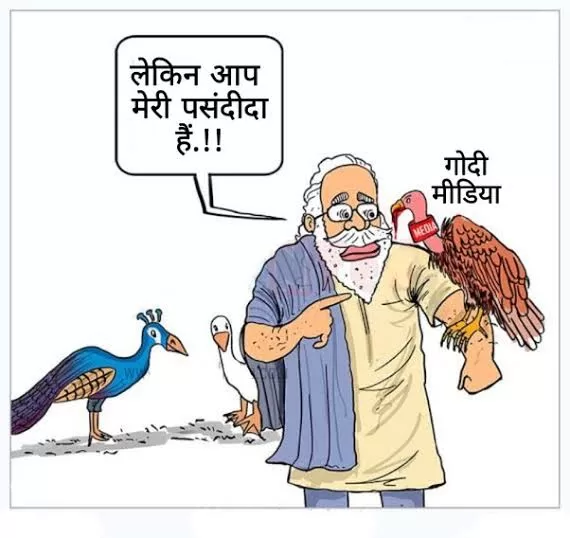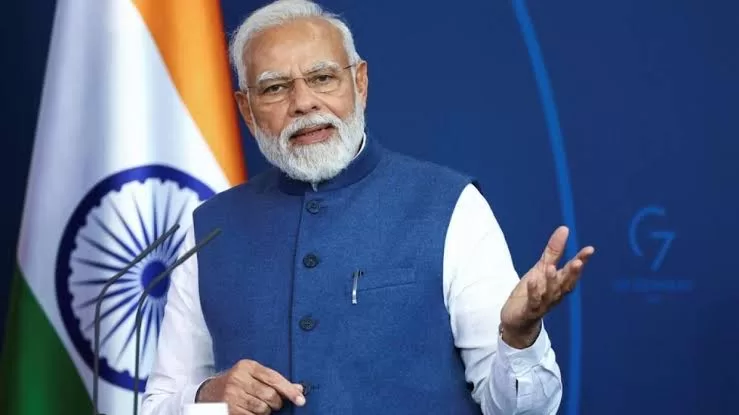-Anshuman।।
In a recent move the state government of Uttar Pradesh, Madhya Pradesh and few others recently sent buses to rescue students from Kota. This came in after a massive SOS Twitter campaign of about 70000 tweets and retweets taken up by the students and their relatives who prepare for engineering and medical entrances in Kota.
Around the same time student’s organizations of Delhi University also called for Twitter campaign along with a 12hour hunger strike. They raised various kinds of demands. From problems related to food, rent, examinations, transportation of students who were stuck in affected zones, release of fellowship and even a Universal Basic income to assist unemployment rising in the recent time.
The 1st case, where the State governments brought back the students can be seen as positive gesture of the States. The government by doing it has responded to the democratic demands of the students, it has strengthened or empowered the people. While Government has yet not paid any heed to the demands articulated by the students in the 2nd case.

The response of the state in the first case also reminds us the capacity of technological capital dancing together with social capital to assert its demands by tweeting and retweeting. While in the second case lack of above mentioned capacities has created a zone of uncertainities and darkness for a lot of students.
The prejudiced attitude of the state reminds us the notion of colonial rule of difference with an added element of indifference in the present times. It is high time that we understand students and education related issues as “Rights” rather than “privileges”, as according to Slavoj Žižek, “words always define the contour of reality”.
FEAR OF THE UNKNOWN
Students throughout the world have been troubled by the spread of the Covid-19 pandemic. According to UNESCO, 191 countries have nationwide lockdown, 98.4{09002dbf131a3dd638c766bc67f289d0640033338bee1ac2eb3568ad7ccae38d} of total world’s students have been affected. In India the scenario is no different. The Government of India announced a complete lockdown. Schools, Colleges and Universities along with spaces of public appearances were shut. Exams were postponed and people were advised to stay where ever they were.
May it be a knee-jerk approach of the state or the unprecedented and astronomical growth of the virus. The spontaneous decision made by the government has increased the magnitude of morbidities which the Virus was already creating. Problems like improper reading materials to lack basic food and lodging facilities emerged for the students because of the policy made in a hurry.
If we start from school going students, they also have to face various kinds of problems. For them education is a very important step towards growth and development. The process of education is not limited to class room rather spills over to different domains such as social interaction, moral value creation and physical activities, absence of which may be detrimental for the development of a child.
Many of them are also in grief as they are dependent on the mid-day meal facility for their nutritional requirements. For many, break in the education process will have huge impact. As school education forms a crucial part of cognitive and affective development in the child. Delayed resumption of classes may also increase the dropout rates especially among the underprivileged sections.
In India due to unequal geographical distribution of educational facilities, students are forced to migrate to urban and international centers of education. Many of these students have returned back to their native towns and many have got stuck. The Virus has created a fear of unknown for both of them. The situations are relatively acute for the ones who are stuck.
Majority of these students live in rented rooms and are dependent for food services in various “Dhabas”. In the times of pandemic as there is an economic pause throughout the world, many students have to face economic problems, hence are unable to see through their rent. Also due to complete lockdown the “dhabas” are also in crisis, occurring due to inadequate availability of food items.
Though the state has come out with an announcement regarding easing the rental norms. The implementation of the same seems dubious. There are even cases where students have been tortured for rent. Added to it a comprehensive food related solutions is also needed. There have been provisions made at the local levels with the help of civil society organizations. Perhaps there is an earnest need for a better public distribution system which is universal in character amid the pandemic.
Students who are preparing for various kinds of competitive exams like UPSC, NET, GRE, GMAT, etc. are left in a dubious zone. Many are ambiguous about the results of exams conducted, while there were many exams were called off in between. The worse hit are the ones who are in final year of their schools or colleges. They are various zones of uncertainties, admission process for higher studies are doubtful, the placement process is at stake. There are also students who complain about missing the final semester of college education.
THE DIGITALISATION QUESTION
In the times of the Pandemic there is also a huge push towards digital learning methods. From schools to colleges all the educational institutions are making a move towards digital learning. Going in line with the private universities the public universities too have started pushing the motion. Major Universities are even propelling the debates for conducting online examinations.
There is no doubt about the fact that dynamics of a physical classroom are diametrically different from conducting virtual classes. Due to lack of funding by the state to education sector, which stands around mere 4.6{09002dbf131a3dd638c766bc67f289d0640033338bee1ac2eb3568ad7ccae38d} of the GDP. The infrastructure is inadequate to foster digital learning. Most of the universities don’t even have a digital platform or a digital library facility. The move towards digitalization should be looked into with great concern.
Sadly, there has been no quest by the Universities to know if the students can operate the digital platforms for learning purposes. The whole process is being transposed from above assuming the fact that everyone has the capacity to access digital platforms. It is important to note that India ranks 62nd in total public expenditure on education per student and measures of the quality of education (IMD) also 2/3rd of the students in public universities come from economically or socially deprived sections.

JNU Campus Aerial View : JNU Administration
India is the second largest online market in the world, there are around 560 million digital users in India. Still it marks around 50{09002dbf131a3dd638c766bc67f289d0640033338bee1ac2eb3568ad7ccae38d} of the total population. Nearly 47{09002dbf131a3dd638c766bc67f289d0640033338bee1ac2eb3568ad7ccae38d} of rich households (top quintile) have at least one member with access to the Internet in contrast to only 4{09002dbf131a3dd638c766bc67f289d0640033338bee1ac2eb3568ad7ccae38d} of poor households (bottom quintile). This shows that the process has not been uniform across all sections of society.
There is further rural-urban digital penetration divide, the “teledensity” gap between rural areas as compared to urban is more than 70{09002dbf131a3dd638c766bc67f289d0640033338bee1ac2eb3568ad7ccae38d} even though 2/3rd of India lives in rural areas. There is also a gendered divide in the digital accessibility, only 16{09002dbf131a3dd638c766bc67f289d0640033338bee1ac2eb3568ad7ccae38d} of Indian women are found to be using internet facilities. There are even cases of community level restrictions which are imposed on the use of digitial technology on women in rural India. Thus shift towards digitalization of education will further expand the preexisting social cleavages.
Standard loss of interactions, uncertainties over future prospects and the exclusionary way in which the problem has been dealt with. All these issues accumulated, creates a huge burden on the students. Resulting into huge impacts on their mental health. Ulrich Beck in one of his writings argues that “the history of risk distribution shows that, like wealth, risk adhere to the class pattern, only inversely, wealth accumulates at the top, whereas risk at the bottom”. His lines come very close to truth when we see that whether it is normality or abnormality the most vulnerable sections are at the bottom. It is interesting to see that these are the ones who don’t have the capacity to tweet or retweet democratic demands.
Dr. B.R.Ambedkar believed that education is a movement. If it does not fulfil its objectives, it is useless. True education cradles humanity, generates sources of livelihood, imparts wisdom and imbues us with egalitarianism. Also, for Mahatma Gandhi true education must correspond to the surrounding circumstances or it is not a healthy growth.
Here it is very important to bring the debate of Right to Internet access and Net Neutrality into picture. What is important to understand is digital communication not simply a connection between people, but a link in the chain of the development process itself. Supreme court in its recent judgement has stated Right to internet as a fundamental right. There must be a solid state led initiative to annihilate all discriminations towards equitable access of digital technology.
CONCLUSION
Karl Marx states “The best of the bees is worst, than worst of the architects, because an architect plans his imagination before erecting it”. It is almost 30 days since the lockdown. The time is ripe enough now for the state to come forward with a planned progression towards dealing with the problems which are coming up front for the students. Filling the meanings of the yet hollow ideas of education and internet as a Right.
It is said that “Never lose the opportunity of a crisis”. Today what is to be done isn’t to frantically struggle to restore the status quo because the status quo wasn’t operating at an effective level and certainly wasn’t serving all of the students fairly. There is a need to create a better tomorrow. Pushing in Bharat Net initiative towards complete Net Neutrality can be one of the ways.
A well thought out and inclusive action plan for students, which clears ambiguities and importantly brings in the participation of all stake holders is the demand of the hour. The state must have a clear understanding of the gaps and challenges (in connectivity, hardware, integration of digital tools in the curriculum, teacher’s readiness) that exist in using technology effectively and act upon that. All of this can strengthen the future education system in a country.


